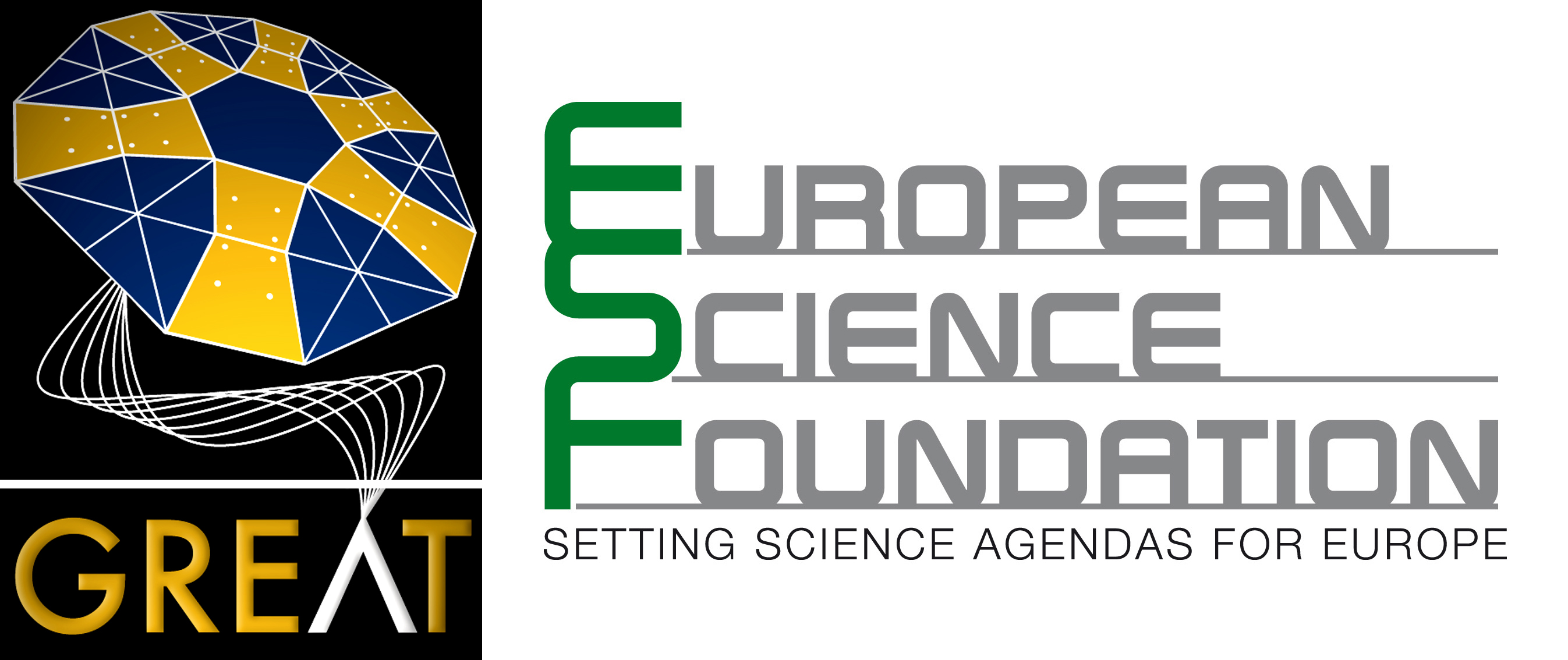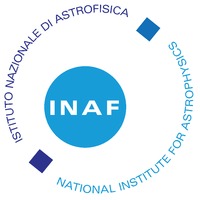GREAT ESF-sponsored WORKSHOP
The metallicity distribution in the Milky Way discs
Bologna, 29-31 May 2012
Bologna, June 1, 2012
During the workshop the region where
Bologna is was struck by a (second) earthquake. Bologna was almost
untouched and we had only small inconveniences, but there were damages
and deaths around.
Our thoughts go to all the victims.
I wish to thank Luigina Feretti and Gianni Zamorani, Directors of the Istituto di Radio Astronomia and the Osservatorio Astronomico di Bologna, for their kind help and hospitality after the problems with the earthquake.
Angela
Scientific Rationale
We
are entering the era of large spectroscopic surveys; these, along with
the unprecedented information from Gaia, will yield a dataset that will be unique in its
ability to comprehensively describe the metallicity distribution in the Galactic discs. We must be ready,
both with the analysis tools and with theoretical models to interpret the data, in order to take full
advantage of this.
To start this preparation process, we propose a workshop that aims to
bring together scientists working on the different kinds of stellar populations, observers and
theoreticians, to review the current status of knowledge, to compare and discuss the different results
already available, to investigate the possible systematics, to review available tools and models and to
discuss possible improvements, and to discuss synergies to best derive a common, complete, and coherent
picture of the formation and evolution of the Galactic discs.
Whilst several meetings and
conferences on Galaxy formation and evolution, on different stellar
populations, and on surveys have been
organized in the recent past, to our knowledge this workshop is
the first focusing
entirely and comprehensively on the metallicity gradient in the
Galactic discs. We
will concentrate on elemental abundances and the expectation of age and
distance determination by
Gaia of field stars and clusters; these are essential informations
that, coupled with dynamical studies, are necessary to fully understand
the Galactic
formation and evolution.
Program (follow link) LINK TO ALL PRESENTATIONS IN PDF
The
Workshop will last 2.5 days (starting on Tuesday, May 29 and ending at lunch time on May 31) and will be
articulated in four main sessions. There will be ample space for
contributed talks (12+3 minutes or shorter communications -there will not be posters) and discussion.
Session 1 : The
theorists view and wishes
Session 2 : The current empirical scenario
Session 3 : Taking the global picture
Session 4 : Expectations from Gaia and large spectroscopic surveys
Confirmed invited speakes
| Carlos Allende Prieto |
The abundance distribution in the thin disc |
Thomas Bensby
|
The abundance distribution in the thick disc |
| Alessandro Bressan |
Evolutionary models and age determination |
Alessandro Chieffi
|
Stellar yields |
Ken Freeman
|
HERMES |
Eileen Friel
|
The radial metallicity gradient as traced from open clusters |
Gerry Gilmore
|
Summary & perspective |
Oscar Gonzalez
|
The metallicity distribution in the Galactic Bulge |
Jennifer Johnson
|
Segue & APOGEE |
Carme Jordi
|
Gaia |
Mario Lattanzi
|
Gaia and the Galactic thin and thick discs
|
| Bertrand Lemasle |
The radial metallicity gradient from Cepheids measurements |
Laura Magrini
|
The metallicity gradients in Local Group galaxies |
Andre' Moitinho
|
The structure of the Galactic discs |
Norbert Przybilla
|
The radial metallicity gradient from OB star and HII region measurements
|
Sofia Randich
|
Gaia-ESO Survey |
Donatella Romano
|
Chemical evolution models
|
Rok Roskar
|
Stellar migration
|
Grazina Tautvaisiene
|
CNO abundances in open clusters and field stars |
Floor van Leeuwen
|
Open clusters as observational isochrones |
Participation
The workshop format sets a limit of about 50 attendees. Thus early registration is encouraged.
The deadline for registration is April 30, 2012.
There is some financial support available for students and early stage researchers.
There is no registration fee.
To register, please send an email to : gradientbo@gmail.com
If you wish to present a short communication (about 5 minutes) or a
talk (15 minutes: 12 plus 3 for questions), please send an email
to
gradientbo@gmail.com with title and a short abstract; you will be contacted later
if the contribution can be accepted.
SOC
Participants Local Information (Work in
progress)
Poster
LOC: Angela Bragaglia, Sandra Caddeo, Olga Diodato, Paolo Donati, Annalia Piccioni
We gratefully acknowledge the finantial support of the European Science Foundation through the ``Gaia Research for
European Astronomy Training'' (GREAT) and of the INAF-Osservatorio Astronomico di Bologna





